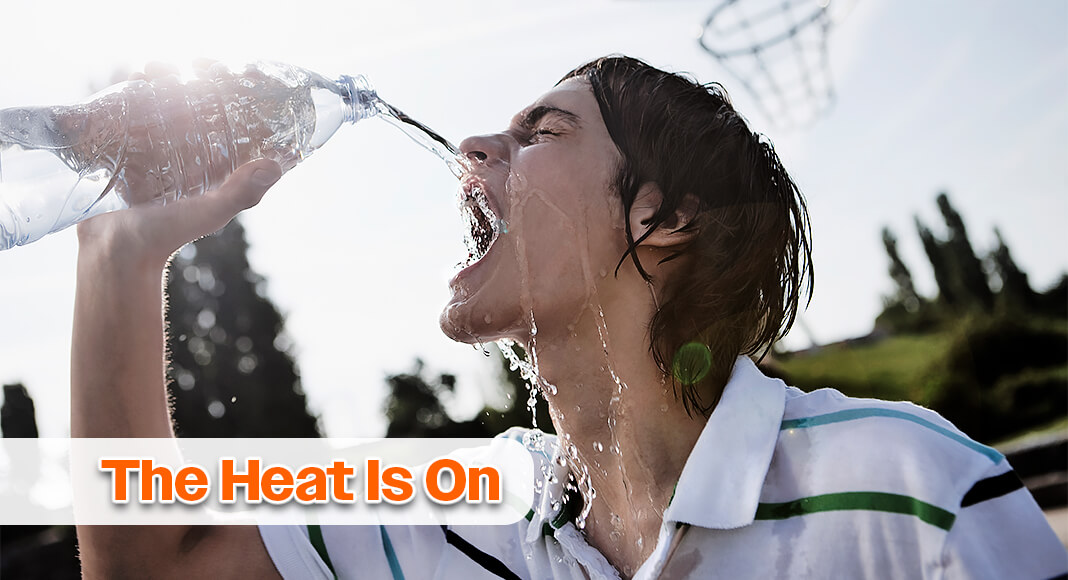
Mega Doctor News
The dog days of summer are upon us in South Texas, with residents across the Rio Grande Valley already dealing with oppressive heat before the official start of summer on June 20.
The combination of elevated temperatures and stifling humidity will result in a hotter than normal outlook across the region through August, according to the National Weather Service, with heat risk trends expected to increase across Deep South Texas, which will most certainly lead to heat advisories and excessive heat warnings.
Unfortunately, prolonged exposure to high heat and humidity without relief or sufficient fluid intake can lead to several types of heat-related illnesses, including heat rash, heat cramps, dehydration, heat stroke and heat exhaustion.
“Heat-related illnesses, particularly heatstroke, can be extremely dangerous and even life-threatening,” says Santos Cantu, MD, an emergency medicine physician who serves as the medical director of the pediatric emergency department at South Texas Health System Children’s. “They occur when the body’s temperature rises to dangerous levels, typically due to prolonged exposure to heat or strenuous activity in hot conditions.”
Between 2018 and 2020, more than 3,000 heat-related illness deaths were reported in the United States, per the Centers for Disease Control and Prevention, with the highest percentage among individuals aged 55-64 years old.
“Older adults are very vulnerable to heat-related illnesses due to physiological changes with age, chronic health conditions and medication use,” says Dr. Cantu. “These factors impact the body’s ability to regulate temperature and sweat effectively.”
Meanwhile, children – especially infants and young children – are at a higher risk for heat-related illnesses due to their smaller body size, higher metabolic rate and inability to regulate body temperature as effectively as adults.
“They’re also more likely to become dehydrated, especially during physical activity, as they may not be able to recognize or communicate their need for fluids” says Dr. Cantu. “Additionally, children tend to rely on adults to protect them from heat and provide them with fluids and shade, which can be a factor in their vulnerability.”
While heat exhaustion can be treated with cooling and hydration, prolonged exposure can lead to long-term effects like chronic heat exhaustion, sleep disturbances, and increased vulnerability to illnesses and minor injuries.
In some instances, if heat exhaustion isn’t treated and progresses to heat stroke, it can lead to more serious complications like kidney damage, heart injury, and even death.
Catching heat-related illnesses early is important because timely intervention can help prevent any potentially life-threatening complications.
So, as the Valley prepares for the hottest season of the year, the South Texas Health System Trauma & Critical Care Institute is offering the following strategies to beat the heat and help prevent heat-related illnesses:
Keep cool: Stay in air-conditioned buildings as much as possible. If you don’t have air conditioning, consider a shopping mall or public building like a library to help cool down.
Mind the temperature & time: You should avoid being outside during the hottest part of the day, between 3:00 and 6:00 p.m. So, keep in mind the time of day you’ll be outdoors and plan accordingly. And remember that early mornings and late evenings are the coolest times of the day, especially if you are planning any physical activity outside.
Stay hydrated: Don’t wait to feel thirsty. Water and sports drinks are the most effective warm-weather drinks. You should also avoid alcohol as it can make you more dehydrated.
Protect your skin: Use sunscreen and wear lightweight, loose-fitting clothes.
Check on those most susceptible to heat-related illnesses: People over 65 are more likely to suffer from heat-related illnesses as are children. Check on them as well as friends, family, neighbors and ask them to do the same.
Ensure pets are properly cared for: Ensure they are getting enough water and avoid leaving them outdoors during the day.
Stay informed: Keep up to date with current conditions via weather updates. Always check the heat index or the combination of the temperature and humidity levels. When you see the heat index in the high 90s or above, be especially careful about the amount of time you spend outdoors.
While spending time in the sun is arguably the best part of summer, too much time in the sun can be dangerous. Should you become ill, seek immediate medical attention if you or someone around you is showing signs of a heat related illness.
The STHS Trauma & Critical Care Institute, comprised of 11 emergency rooms across the region – including seven close-to-home freestanding emergency departments, is home to the largest integrated network of emergency care in the Rio Grande Valley. To find a location near you, visit www.southtexashealthsystem.com/our-facilities.









